|
|
The Minnesota State Parks and Trails Fall Color Update newsletter is sent Thursday mornings in September through October of the leaf peeping season.
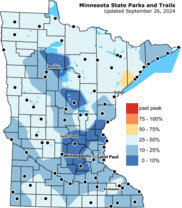
Alternate Color Scheme Map
Did you know the Fall Color Finder map can be toggled to an alternative color scheme? The alternate map was developed for people who have difficulty seeing red or green. Check it out on our Fall Color website! The alternate color scheme can be toggled on and off with buttons near the top of the page.
|
|
|

Looking for a new way to experience the outdoors? Avid explorer, Rob Pelton is taking us into the trees this week and showing us how to hammock camp. No stranger to camping in all seasons, Rob has built an incredible YouTube channel where he walks through tips, gear recommendations, and trip recaps—including mindboggling adventures like sub-zero hammock camping in the BWCAW 🤯 Don't worry! This week he's just teaching us the basics. Read his blog below or watch his visit to Afton State Park. Enjoy!
If there’s one thing I’ve learned in all my years of camping, it’s that getting a good night’s sleep can make or break an outdoor experience. For me, that means ditching the tent and embracing the comfort of a hammock. There’s nothing quite like swaying between two trees under the stars, especially when the crisp, cool air of fall starts to settle over Minnesota.
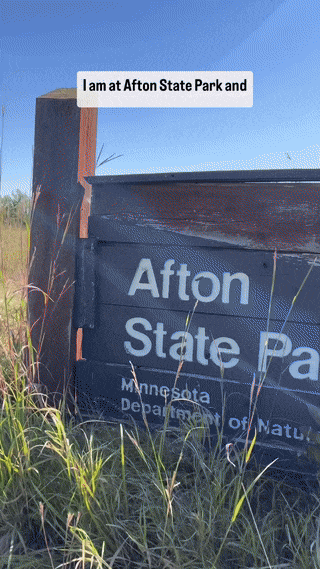
Fall, hands down, is the best time of year to experience the outdoors in Minnesota. The oppressive humidity of summer fades, and the temperatures finally drop to that perfect sweater-weather range. Our state’s infamous mosquitos—often jokingly referred to as the "unofficial state bird"—start to disappear, making for a much more pleasant camping experience. Though the mosquitoes may vanish, you can still hear the haunting calls of the common loon echoing over one of Minnesota’s famous 10,000 lakes. The busy crowds also start to dwindle as the summer camping season winds down, leaving behind a quieter, more serene wilderness.
All of these factors combine to create the perfect environment for the best sleep you could imagine. Even if you’ve had rough nights camping in the past, a well-set-up hammock will change your mind.
I’ve spent countless nights in Minnesota State Parks, exploring the vast trail systems and spending time in the wild. With 4,440 campsites spread across 63 state parks, it’s easy to find a quiet corner to set up camp. The majority of campers I come across opt for traditional ground tents, which are the norm for good reason. Tents are simple, familiar, and require a basic know-how to pitch one. Once you’ve found a flat, rock- and root-free spot, tent camping can be pretty comfortable. If the weather turns, a well-designed tent provides a dry place to ride out a rainstorm, with enough room to sit up and enjoy some downtime as the rain patters softly on the fly.
|
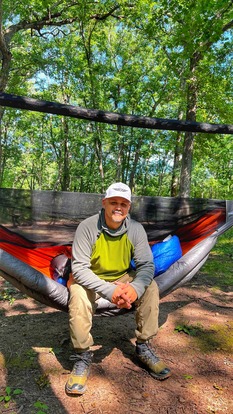
However, for me, sleeping on the ground—even with the best sleeping pad—leaves me aching in the morning. No matter how thick the pad or how well I position myself, my back, shoulders, and hips end up sore. The discomfort, especially after a long day of hiking, led me to search for an alternative. That’s when I discovered the world of hammock camping, and I haven’t looked back since.
A hammock offers the most comfortable, cloud-like sleeping experience I’ve ever had outdoors. The concerns of finding a perfectly flat campsite or avoiding rocks and roots vanish. You’re suspended in the air, free from the hassles of uneven ground and hard surfaces. But as with anything that seems too good to be true, there are some challenges. Dialing in the perfect hammock setup, or “system,” takes a bit of trial and error.
First, there’s the “fiddle factor”—the small details you need to get right for a comfortable hang. How high should you hang it? What’s the right angle? Are the trees far enough apart? Can they hold your weight? And then there’s warmth—how do you prevent cold air from seeping in from below? These questions can be overwhelming for a beginner, and they require both research and experience to answer. While tents are relatively straightforward, hammocks take a bit more tinkering.
Through my own trial and error, I’ve learned that a good hammock setup isn’t necessarily more affordable, lighter, or even simpler than a high-quality tent. In fact, I’d argue that tents are easier to use right out of the gate. But for me, it’s all worth it for one reason: a better night’s sleep.
The key to hammock camping lies in getting the right gear and learning how to use it. You’ll need a dedicated camping hammock, not just one of those backyard loungers. Insulation is also crucial—an underquilt will keep the cold from creeping in underneath you, which is essential in Minnesota’s cool fall nights. A proper rainfly, large enough to cover your hammock and keep you dry, is another must-have. And of course, a bug net is important, even as the mosquito numbers start to drop.
As the number of hammock campers grows, I believe more people are discovering what I’ve found: the pure joy of being suspended between two trees. Yes, it takes a bit more effort to get it just right, but the rewards are just too good to pass up.
Fall is here, and hammock campers are on the move, flocking to state parks across Minnesota. So, if you’re thinking about joining us, don’t be afraid to give it a try. You’ll find that while we like to sleep high in the sky, our heads aren’t stuck in the clouds. We’re just enjoying the best night’s sleep camping has to offer.
|
 |
|
|
 Experience the Colors without the Crowds
Explore Minnesota's State Forests
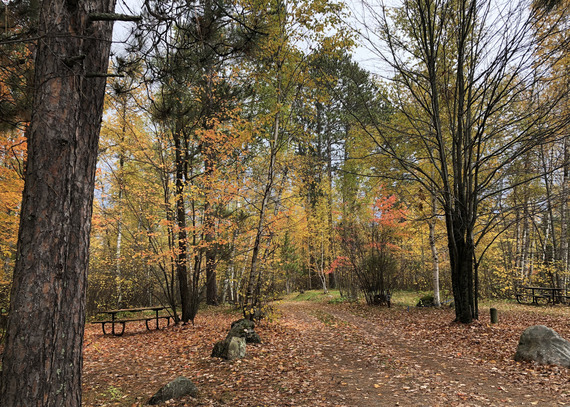 📷: Park staff, George Washington State Forest, Beatrice Lake Campground - taken 9/30/20
As the leaves begin to turn and fall colors spread across Minnesota, it’s no surprise that state park campsites fill up fast. But if you missed out on reserving a spot, don’t worry! Minnesota’s state forests offer fantastic alternatives that still let you experience the beauty of the season without the hustle and bustle.
While state park campgrounds often offer modern amenities like showers and organized programs, state forest campgrounds focus on the basics, giving you the freedom to enjoy unstructured outdoor activities at your own pace. These semi-modern campgrounds might not have all the bells and whistles, but they’re regularly patrolled to ensure a safe and enjoyable experience for all.
Dispersed Camping: A True Wilderness Experience
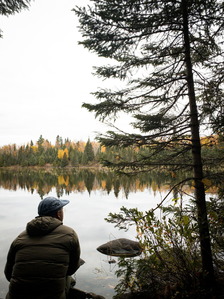
For those who crave solitude and a deeper connection with nature, dispersed camping in state forests is the perfect option. Picture yourself setting up camp far from any designated site, surrounded by the tranquil sounds of the wilderness. With no amenities like bathrooms, fire grates, or picnic tables, it’s just you, your gear, and the great outdoors. Best of all, dispersed camping is free and operates on a first-come, first-served basis.
To get started, all you need is a state forest map (many are available as downloadable geoPDFs) and a sense of adventure. Remember to camp at least one mile away from any designated campsites or campgrounds, and choose an existing site or natural clearing that minimizes impact on the environment. It’s rustic camping at its finest—perfect for those who want to embrace the essence of fall without the crowds.
Rustic Camping in State Forest Campgrounds and Recreation Areas: A Balance of Comfort and Nature
|
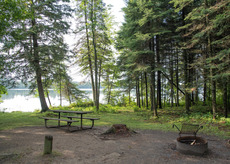
If you prefer a bit more structure to your camping experience, state forest campgrounds and recreation areas offer a variety of rustic camping opportunities. With cleared areas, fire rings, vault toilets, picnic tables, and sometimes even drinking water, these sites provide basic amenities while still keeping you close to nature. The best part? All campsites in state forests are available on a first-come, first-served basis, so there’s no need to plan months in advance.
Whether you’re camping solo, with family, or bringing a larger group, there’s a site to suit your needs. Individual campsites offer the essentials for a peaceful stay, while group campsites accommodate larger gatherings. If you’re planning to bring your horse or off-highway vehicle, special campsites cater to those needs too, with horse campsites featuring picket lines and OHV-friendly sites allowing ride-in, ride-out access.
|
Buffalo River State Park: Where Prairie Meets Fall Color
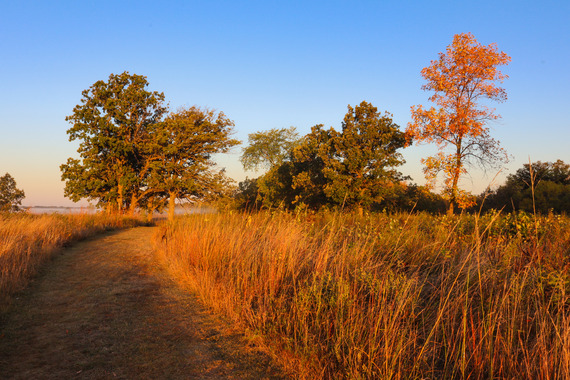 📷: Ryan Ham, Buffalo River State Park - taken 9/22/24
Find your perfect fall adventure at Buffalo River State Park in western Minnesota. Rolling prairies, fields of wildflowers and the flowing waters of Buffalo River are the perfect backdrop to enjoy cooler weather, stunning vistas and quiet wildlife.

Located at the “lake bottom” of ancient Lake Agassiz, Buffalo River State Park boasts one of the largest and best prairie preserves in the state—perfect for the prairie lovers or for those that love a change in scenery! Take the 2-mile Bluestem Trail, where you can discover dozens of over 250 species of wildflowers and tallgrasses located in both the state park and adjoining Bluestem Prairie Scientific and Natural Area. Take in the rich, earthy hues of the endless prairie by day, and let the sounds of the wind sweeping through the tallgrasses lull you to sleep in the rustic campgrounds at night.
|
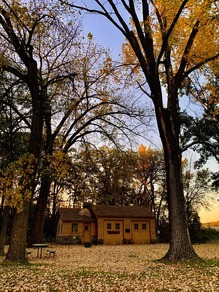
While known for its prairie, Buffalo River State Park also features great fall foliage, thanks to its riverine forest of elm, ash, cottonwood, oak and basswood that frame the banks of the Buffalo River. Enjoy the changing leaves and picturesque waters along the 3-mile River View Trail. You never know, you might also see signs of the abundant wildlife that call this park home! Listen for bobolinks, prairie chickens and upland sandpipers or watch for signs of deer, beavers, red foxes and jackrabbits.
Buffalo River State Park is a hidden gem in the western part of the state. With its scenic riverine forest and vast prairie, you are guaranteed stunning views this fall season. Whether you have an hour, a day or a weekend, make sure Buffalo River State Park is part of your fall adventure this year!
|
|
|
|
If this email was forwarded to you, sign up so you too can follow the colors
Explore past issues.
|
|
|
|
|